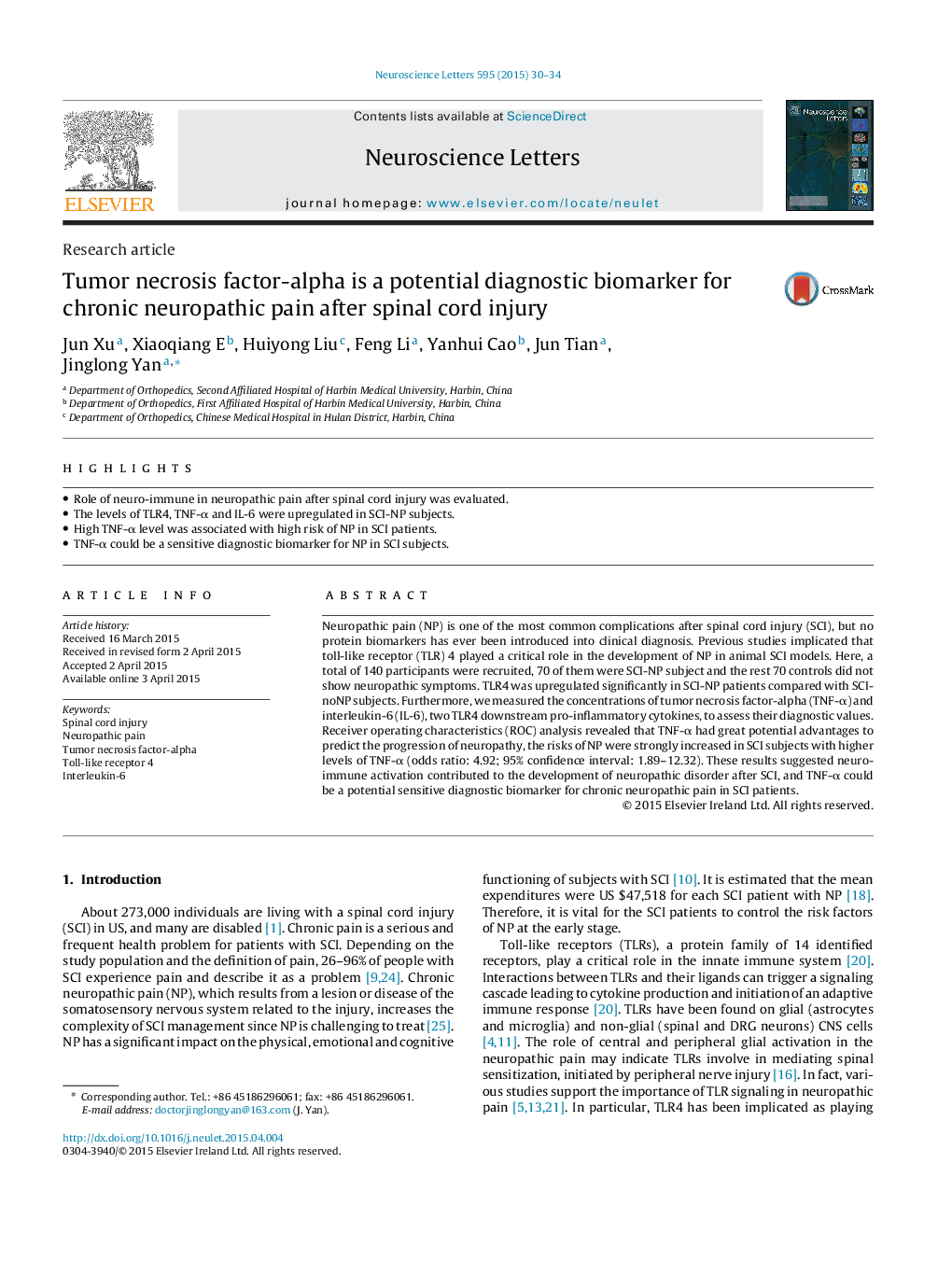| Article ID | Journal | Published Year | Pages | File Type |
|---|---|---|---|---|
| 6280942 | Neuroscience Letters | 2015 | 5 Pages |
â¢Role of neuro-immune in neuropathic pain after spinal cord injury was evaluated.â¢The levels of TLR4, TNF-α and IL-6 were upregulated in SCI-NP subjects.â¢High TNF-α level was associated with high risk of NP in SCI patients.â¢TNF-α could be a sensitive diagnostic biomarker for NP in SCI subjects.
Neuropathic pain (NP) is one of the most common complications after spinal cord injury (SCI), but no protein biomarkers has ever been introduced into clinical diagnosis. Previous studies implicated that toll-like receptor (TLR) 4 played a critical role in the development of NP in animal SCI models. Here, a total of 140 participants were recruited, 70 of them were SCI-NP subject and the rest 70 controls did not show neuropathic symptoms. TLR4 was upregulated significantly in SCI-NP patients compared with SCI-noNP subjects. Furthermore, we measured the concentrations of tumor necrosis factor-alpha (TNF-α) and interleukin-6 (IL-6), two TLR4 downstream pro-inflammatory cytokines, to assess their diagnostic values. Receiver operating characteristics (ROC) analysis revealed that TNF-α had great potential advantages to predict the progression of neuropathy, the risks of NP were strongly increased in SCI subjects with higher levels of TNF-α (odds ratio: 4.92; 95% confidence interval: 1.89-12.32). These results suggested neuro-immune activation contributed to the development of neuropathic disorder after SCI, and TNF-α could be a potential sensitive diagnostic biomarker for chronic neuropathic pain in SCI patients.
